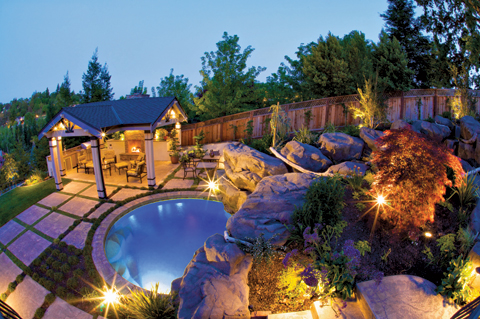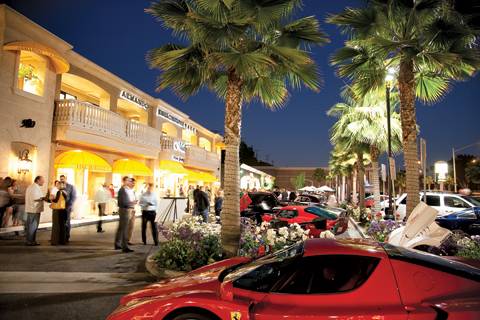By Natasha Dorsainvil
Creative Director Matt Wilson of Second Nature Environments offers a connoisseur’s guide to finding a forward thinking landscape designer/architect to transform your home into a personal resort.
In an era where ‘staycation’ has seeped into modern day lexicons, landscape design is often an afterthought when it comes to boosting real estate value. While homeowners invest a great amount of time, effort, and money to create picturesque indoor areas, they often forget that buyers look at the whole property, not just what’s between the walls. Landscape design is now at the forefront of every savvy consumer’s wish list for emulating a vacation resort experience on his or her own property. Applying a coat of paint and installing new appliances can be tabbed under DIY, but a successful and thriving landscape requires much more than a shovel, mulch, and well-placed potted plants.
Matt Wilson of Second Nature Environments cautions homeowners who are looking to enhance their outdoor spaces for the market or for their family’s enjoyment. “The preponderance of today’s landscape designers are grossly limited in their creativity and imagination,” he says. Many so-called design professionals get involved with landscaping because of their love of nature and plants with design ability as an afterthought. Because of this, the work of a landscape designer/architect must be thoroughly examined before being commissioned.
Keep in mind that with today’s landscape design innovations, you don’t have to settle for a landscape designer’s cookie-cutter layouts because of site limitations, building code restrictions, and budgets.
First comes the task of finding a designer. A reputable referral will go a long way, but there are other options if word-of-mouth is lacking. Try researching online using keywords that resonate with you and your intended project. Words like creative, luxury, affluent, landscaping, waterfall, lagoon, etc. should yield relevant results. Also, browse through home, design, and lifestyle publications and contact the advertisers that you are drawn to. Wilson recommends interviewing at least three design firms before signing a contract. “This will give you an opportunity to qualify the firm that has the skills, knowledge, and understanding of your project,” he says. “You’ll recognize almost immediately who is a true design visionary and who is pushing a fixed agenda,” he adds.
Once you find your designer, any well-qualified landscape architect will ask lots of questions during a telephone consultation. Second Nature Environments goes as far as having their clients complete a 300-item psychographic questionnaire as part of their unique consultation process. This compilation of likes and dislikes not only gives the designer a better understanding of their client’s thinking, it also gives the client the opportunity to clarify or edit their expectations. “I want to know what my clients appreciate about their property, their favorite time of day to be outside, and what they dislike about their neighbor’s property, so that I can address their concerns with the amenities of their choosing,” says Wilson.
There are other aspects of the project that should be considered. If, for example, the client has a smaller piece of property with a two-story neighbor staring down into their backyard, it can be somewhat intimidating for a client to use the space. In this case, Wilson would offer the following suggestions to clients: plant large shrubs that will grow up to hide the site lines, sink the patio space below grade, add vine-covered arbors, or add a decorative architectural wall to create privacy.
Keep in mind that with today’s landscape design innovations, you don’t have to settle for a landscape designer’s cookie-cutter layouts because of site limitations, building code restrictions, and budgets. “Lately I have noticed that we as a profession have become lazy in regards to creativity and originality. Many of us aspire more to make a profit with the next knockoff,” Wilson notes. “My industry of landscape design has really settled into a rut of complacency, from my perspective.” Second Nature goes against the grain, creating personal, original nirvanas for its customers.
Don’t be afraid to ask your designer to integrate exciting elements like an underground waterslide complete with skylights, or a stationary wave-riding machine like those found aboard cruise liners. Wilson adds that because Second Nature Environments has built a reputation for creating “totally unique environments” unlike what their client’s neighbors have settled for in the past, most of their clients aspire to have the latest and greatest, which doesn’t stop at ultra creative design, but also includes high tech products to enhance any outdoor experience.
When it comes to design, the sky should be the limit, not your landscape designer’s imagination. All aspects of an effective design come about through research and knowledge of what’s available. Nobody needs to know all of the answers, but at a minimum everyone should know where to find them and that takes time and dedication.
Second Nature Environments
San Francisco, California
415.931.4000
www.2ndnatr.com





















